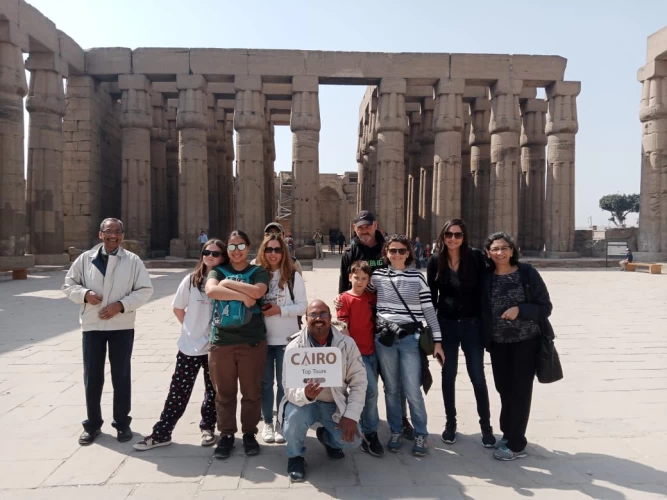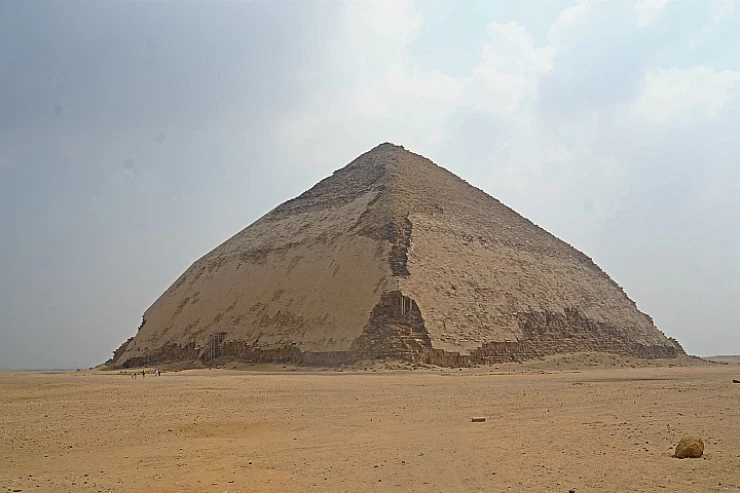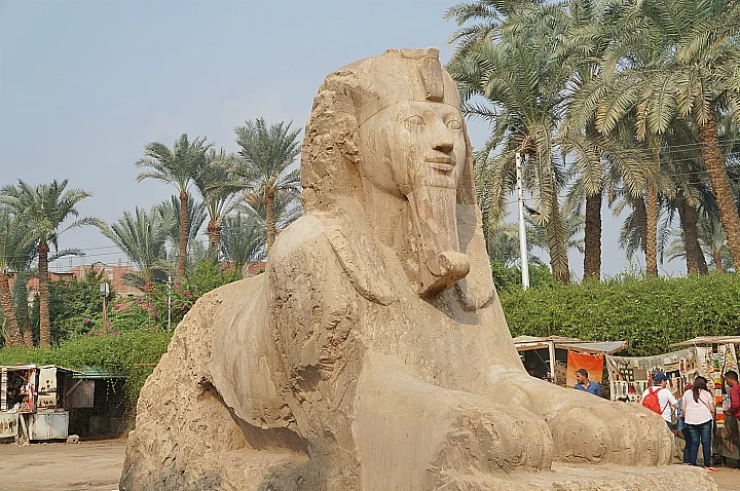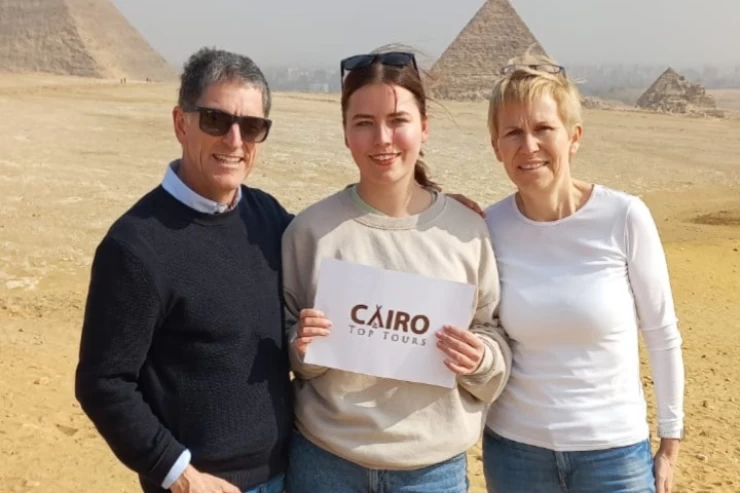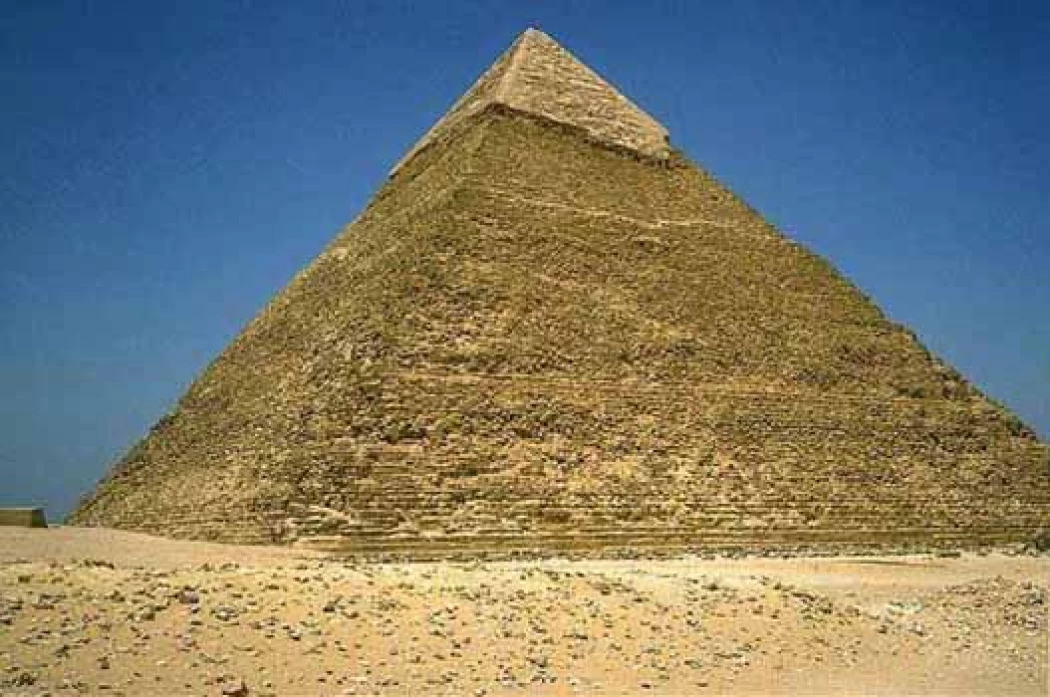
King Cheops | King Khufu | Owner of the Great Pyramid
Khufu, the Enduring Mystery:
At present, the Great Pyramid stands as an assurance of Khufu's vision and the ingenuity of the ancient Egyptian civilization. Whether it is divine supremacy or a human marvel, such grandiosity and mysterious features in this grand work draw millions of people who marvel at its bared beauty and the secrets it keeps within.
Although the reign of King Khufu ended over 4,500 years ago, his very shadow is felt through time and ensures that he remains one of the most enigmatic and most ambitious rulers of ancient Egypt.
Khufu's Legacy and Enigma
Contrary to his gigantic pyramid, not much is known about the personality of Khufu. His ruling has been reported in varied ancient sources: while some describe him as a stern and despotic king, others report him as a just and god-fearing leader. The only extant life-size statue of Khufu, carved in ivory, has been discovered from Abydos and serves as rare evidence of the appearance of this ruler.
Though his mummified remains have never been discovered, Khufu is perpetuated through numerous inscriptions, old texts, and, primarily, his famous pyramid. His influence and imprint on Egyptian history are so strong, leading him to have his own legacy, for which untold studies have been done since then and continue to fascinate millions of historians, archaeologists, and travelers.
Traditionally, twenty-three years of reign have been attributed to him, although many experts, based on the vastness of his ambitious building program, believe that he reigned much longer; for his part, Herodotus claims that his reign lasted fifty years.
Most remarkable works of King Khufu:
It can be so difficult to imagine such an immense structure; the fact that the whole of London's parliament and Saint Paul's Cathedral could be contained there comfortably may perhaps help you get an idea.
Napoleon Bonaparte, the passionate admirer of Egyptian antiquities, was so impressed by his visit to the plateau of Giza that (thanks to the help of his mathematicians) he was able to officially announce that in the three pyramids, there was enough stone to build a three-meter-high wall that surrounded the whole territory of France.
Cheops, Owner of the Great Pyramid
The Great Pyramid is, among all, the one aligned most precisely. It is clear that the orientation had to be very important for engineers and supervisors. However, we do not know for sure if such precision was a practical response to the Bent Pyramid in Dahshur and Meidum accidents, or if at the base there was simply a religious need that made it necessary to align the funeral chamber (and consequently the body of the deceased pharaoh).
In any case, whatever the reasons, the final result leaves no room for doubt. The sides of the pyramid of Cheops are oriented almost exactly to the north, while the pyramids that would later have been built, first by his son Chephren and then by his grandson Mycerinus, would have been aligned with each other and with respect to the elements of the complex of the Great Pyramid, which is a must-see site during your trip to Egypt.
Here, Cheops was to be buried for eternity in his Aswan red granite sarcophagus. However, some Egyptologists believe that all three rooms were part of the original plan; in particular, the "Queen's Chamber" would have served as a serdab room, in which a statue of the late pharaoh was to serve as a substitute for his body. Five rooms were built above the "King's Chamber" to lighten the structure, an innovation that served to distribute the load of the pyramid that would otherwise have overloaded the ceiling of the burial chamber. Without worrying about understanding the key terms of Egyptian history, we will see an Egyptologist guide, who will meet your expectations.
One of the most famous rumors is that Pharaoh Khufu does not have any statues except the ivory statue, but this is not true because many other statues have been found, but the ivory statue is the most famous of them because it depicts the entire face of the king. Other statues have been found, and scholars have determined that they belong to King Khufu. You can see these statues when you visit the city of Giza, and the most famous of them were transferred to the Egyptian Museum, which is located in a distinctive structure in Tahrir Square, Cairo, where the oldest collection of Pharaonic art and monuments can be found.
At present, the Great Pyramid stands as an assurance of Khufu's vision and the ingenuity of the ancient Egyptian civilization. Whether it is divine supremacy or a human marvel, such grandiosity and mysterious features in this grand work draw millions of people who marvel at its bared beauty and the secrets it keeps within.
Although the reign of King Khufu ended over 4,500 years ago, his very shadow is felt through time and ensures that he remains one of the most enigmatic and most ambitious rulers of ancient Egypt.
Contrary to his gigantic pyramid, not much is known about the personality of Khufu. His ruling has been reported in varied ancient sources: while some describe him as a stern and despotic king, others report him as a just and god-fearing leader. The only extant life-size statue of Khufu, carved in ivory, has been discovered from Abydos and serves as rare evidence of the appearance of this ruler.
It can be so difficult to imagine such an immense structure; the fact that the whole of London's parliament and Saint Paul's Cathedral could be contained there comfortably may perhaps help you get an idea.
Napoleon Bonaparte, the passionate admirer of Egyptian antiquities, was so impressed by his visit to the plateau of Giza that (thanks to the help of his mathematicians) he was able to officially announce that in the three pyramids, there was enough stone to build a three-meter-high wall that surrounded the whole territory of France.
The Great Pyramid is, among all, the one aligned most precisely. It is clear that the orientation had to be very important for engineers and supervisors. However, we do not know for sure if such precision was a practical response to the Bent Pyramid in Dahshur and Meidum accidents, or if at the base there was simply a religious need that made it necessary to align the funeral chamber (and consequently the body of the deceased pharaoh).
Here, Cheops was to be buried for eternity in his Aswan red granite sarcophagus. However, some Egyptologists believe that all three rooms were part of the original plan; in particular, the "Queen's Chamber" would have served as a serdab room, in which a statue of the late pharaoh was to serve as a substitute for his body. Five rooms were built above the "King's Chamber" to lighten the structure, an innovation that served to distribute the load of the pyramid that would otherwise have overloaded the ceiling of the burial chamber. Without worrying about understanding the key terms of Egyptian history, we will see an Egyptologist guide, who will meet your expectations.







